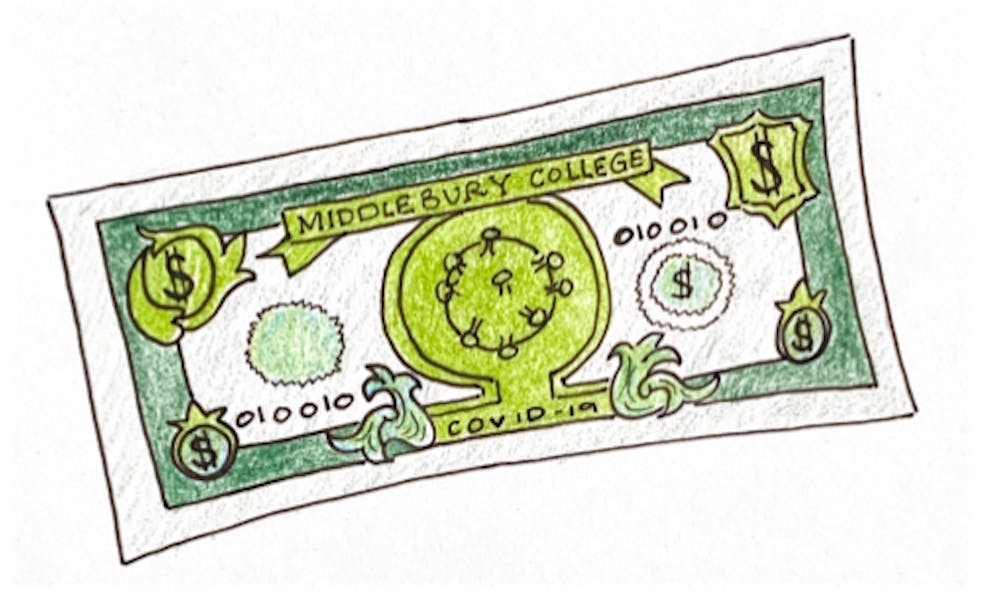Proponents of the Sense of the Faculty Motion argue that such questions around keeping or releasing MIIS are necessary due to MIIS’ seemingly precarious financial situation. The motion references a staggering $100 million loss on the institute and suggests that cuts at the college were taken to subsidize expenses at MIIS. Further investigation into institute and college finances presents a more complicated budgetary situation.
In 2005, when Middlebury and MIIS, then known as the Monterey Institute, began their affiliation, the college injected $7.4 million into MIIS for general improvements. In 2010, the college acquired the institute’s assets, which were valued at around $40–50 million at the time.
Annual Middlebury College financial statements for the last 15 years are publically accessible through the College’s website. MIIS’ individualized financial statements are only available for the fiscal years of 2007, 2008 and 2009. The institute was profitable for all three years, and in 2008 held $24.7 million in long-term debt and $54.6 million in assets. In 2008, the college took on a total of $22.8 million of debt from MIIS.
In 2009, the college operated at a loss before bouncing back to profitability in 2010. For the next few years, the college operated at a budget surplus. In 2014, the college began operating at a loss. The college’s Executive Vice President for Finance and Administration David Provost attributes this downturn to stagnant tuition prices, not MIIS.
“My assessment is that [deciding to cap tuition increases at 1%] was fine, but there was no effort to control expenses going up at the same rate, and we saw expenses going up from 2013 to 2016 at the rate of five to seven percent,” Provost said in an interview with The Campus. Patrick J. Norton, the college’s Vice President for the Finance and Treasurer’s Office from 2008 to 2016, did not respond to multiple requests for comment.
Regarding claims about the size of MIIS’ role in the financial struggles of the last decade, Provost stated that from 2012 to 2020, the institute’s annual operating deficits only ranged from $2 million to $5 million while the college’s annual deficit ranged from $10 million to $22 million. “Strictly from a percentage standpoint…Monterey is contributing to about 20% of the financial struggle,” Provost clarified.
In 2020, both the college and the institute were expected to break even on their budgets. While neither school did due to the pandemic, the institute is expected to break even in fiscal year 2021.
In the motion, Swenton suggested that due to MIIS’ annual losses of $5–7 million as well as its $30 million of debt from 2005, the institute has accounted for “somewhere from seventy million to over one hundred million dollars” of debt service. Provost estimates that when accounting for MIIS’ earlier budget surpluses, that number is closer to $30 million. The $100 million number is a particularly popular, albeit incorrect, figure amongst those advocating for MIIS’ dissolvement, with multiple sources citing such a large deficit as their reason for supporting the motion.
Many proponents of the motion point to the higher cost of living in California as a needless drain on college resources. At Middlebury College, the lowest hourly rate for staff in 2020 (the most recent year published) was $11.00/hr, Vermont’s minimum wage is now $11.75/hr. In 2019 (the most recent year published), the lowest hourly rate at MIIS was $12.00/hr; California’s minimum wage is now $14.00/hr.
Opponents of the motion don’t dispute the operating losses of MIIS, but they do refute what they see as an “us or them” mentality and a lack of attention to student experience.
“One thing that I really worry about when we have discussions like this is that I feel like they should be based more on student priorities versus who earns what,” said Jessica Teets, an associate professor of political science at the college.
Others have a more pragmatic stance.
“In defending MIIS, one of my colleagues said, ‘We’re a nonprofit — we’re not supposed to make money,’ which is true, but not relevant.” Bremser told The Campus. “For fifteen years, the college part of this nonprofit has been shifting resources to the Monterey branch, to make up for the fact that MIIS still can’t sustain itself.”

Riley Board '22 is the Editor in Chief of The Campus. She previously served as a Managing Editor, News Editor, Arts & Academics Editor and writer.
She is majoring in Linguistics as an Independent Scholar and is an English minor on the Creative Writing Track.
Board has worked as a writer at Smithsonian Folklife Magazine and as a reporter for The Burlington Free Press. Currently, she is a 2021-2022 Kellogg Fellow working on her linguistics thesis. In her free time, you can find her roller skating in E-Lot or watching the same sitcoms over and over again.

Jake Gaughan is an Editor at Large.
He previously served as an Opinion Editor and News Editor.




